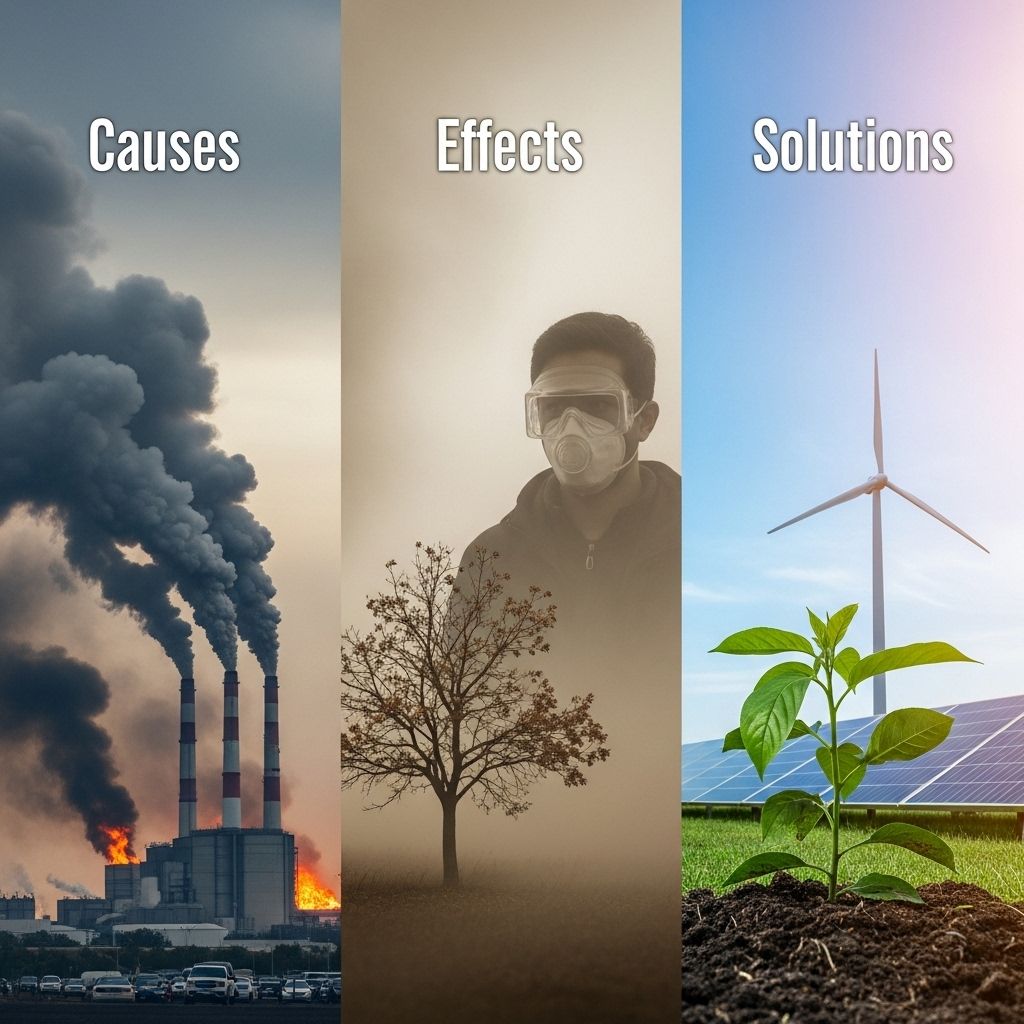Understanding Air Pollution: Causes, Effects, and Solutions
A comprehensive guide to air pollution, its sources, impact on health and climate, and strategies for a cleaner world.

Air pollution is a widespread environmental challenge that impacts the health of living organisms, the stability of ecosystems, and the planet’s climate. As a result of human activities and natural processes, pollutants are released into the atmosphere, degrading air quality and posing significant short- and long-term risks. This guide explores what air pollution is, where it comes from, its effects, and proven solutions for a cleaner, healthier future.
What Is Air Pollution?
Air pollution refers to the presence of harmful substances in the atmosphere at levels that endanger human health, damage the environment, and disrupt natural processes. These substances can be emitted directly from a source (primary pollutants) or form through chemical reactions in the air (secondary pollutants).
- Primary pollutants: Emitted directly into the air from sources such as vehicles, factories, and wildfires (e.g., particulate matter, sulfur dioxide, nitrogen oxides).
- Secondary pollutants: Created when primary pollutants react in the atmosphere, such as ground-level ozone produced from sunlight-driven reactions involving nitrogen oxides and volatile organic compounds.
Main Types of Air Pollution
Air pollutants fall into diverse categories, each with unique origins and risks. Understanding these types is key to mitigation.
Particulate Matter (PM)
Particulate Matter (often PM2.5 and PM10) is a mixture of solid and liquid particles suspended in the air. PM2.5 particles, with a diameter less than 2.5 micrometers, can infiltrate the deepest parts of the lungs and even enter the bloodstream.
- Sources: Combustion of fossil fuels (cars, power plants), smokestacks, wildfires, dust storms.
- Health risk: Increases risk of heart attacks, strokes, asthma, and premature death.
Nitrogen Oxides (NOx) and Sulfur Dioxide (SO2)
- Nitrogen oxides (NOx): Produced from high-temperature combustion, especially in vehicles and power plants.
- Sulfur dioxide (SO2): Resulting from burning coal and oil, as well as volcanic activity.
- Effects: Irritate lungs, form acid rain, and contribute to ozone formation.
Ground-Level Ozone (O3)
Although ozone in the upper atmosphere protects us from ultraviolet radiation, ground-level ozone is harmful and a primary component of smog.
- Formation: Sunlight-driven reaction of NOx and VOCs (volatile organic compounds).
- Impacts: Aggravates respiratory diseases like asthma and damages crops and forests.
Volatile Organic Compounds (VOCs)
- Sources: Paints, solvents, gasoline vapors, and industrial emissions.
- Significance: React with NOx to create ground-level ozone and contribute to smog.
Carbon Monoxide (CO) and Lead
- Carbon monoxide (CO): Colorless, odorless gas from incomplete combustion; particularly dangerous indoors (e.g., faulty heaters).
- Lead: Released by industrial processes, previously common in gasoline; accumulates in the body and damages the nervous system.
Sources of Air Pollution
Air pollution stems from a complex interplay of natural and human-made (anthropogenic) sources:
- Natural sources: Wildfires, volcanic eruptions, dust storms, and pollen can all elevate pollutant
References
- https://www.streetsheet.org/how-i-became-a-tree-hugger-sfs-urban-canopy-crisis/
- https://theecologist.org/2014/aug/09/hug-tree-save-your-life
- https://www.latimes.com/socal/glendale-news-press/news/tn-gnp-xpm-1999-12-07-export52071-story.html
- https://rockinst.org/blog/improbable-tree-hugger/
- https://www.patagonia.com/stories/the-original-tree-huggers/story-71575.html
Read full bio of Sneha Tete












